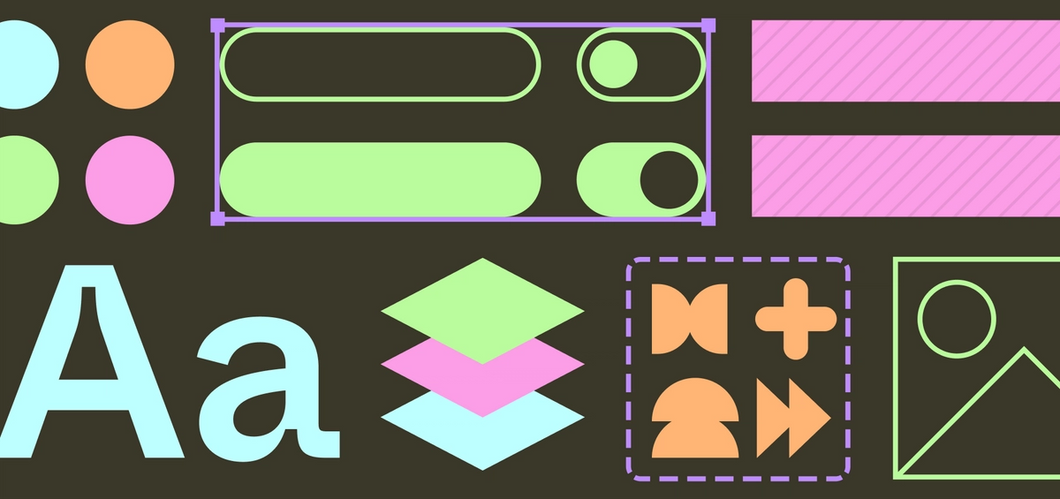Is Figma's AI The Future Of Design? A Comparison With Competitors

Table of Contents
Figma's AI Features and Capabilities
Figma's integration of AI is transforming the design process, offering powerful features that boost efficiency and creativity. Let's examine its key AI capabilities:
Generative Design in Figma
Figma's generative design features allow designers to explore multiple design options quickly. This is a game-changer for tasks that previously required significant manual effort.
- Examples of generative design tasks in Figma: Generating variations of a logo, creating different layout options for a website, experimenting with various typography styles, and rapidly prototyping different UI components.
- Comparison with other generative AI design tools: While Figma's generative capabilities are impressive, they are still developing. Compared to dedicated image generation tools like Adobe Firefly, DALL-E 2, and Midjourney, Figma's AI might offer less artistic freedom in pure image generation. However, its strength lies in its seamless integration within the design workflow, allowing for immediate implementation of generated assets within the larger project. Figma's AI excels at design-specific tasks, rather than purely artistic image generation.
- Ease of use and workflow integration: A key advantage of Figma's generative design features is their intuitive integration into the existing Figma interface. This makes it easy for existing Figma users to adopt and utilize these AI-powered tools without needing to learn a completely new platform.
AI-Powered Assistance and Automation
Beyond generative design, Figma incorporates AI for various assistive functions that streamline the design workflow.
- Specific examples of AI assistance: Figma's AI can suggest color palettes based on existing design elements, optimize layouts for improved readability and visual hierarchy, and even offer smart suggestions for text styles and component usage.
- Improved workflow efficiency and productivity: These AI-powered features significantly reduce the time designers spend on repetitive or time-consuming tasks, allowing them to focus on higher-level creative problem-solving. This translates to increased productivity and faster project turnaround times.
- Comparison with similar features in other design software: While other design software packages offer some AI-powered assistance, Figma's integration is often praised for its seamlessness and intuitive nature. The combination of generative design and smart assistance sets it apart from many competitors.
Key Competitors and Their AI Offerings
Figma isn't alone in the AI design tools arena. Several strong competitors offer their own AI-powered features.
Adobe Creative Suite (Firefly, Sensei)
Adobe's Creative Suite, with its integrated AI features like Firefly and Sensei, represents a significant competitor to Figma.
- Specific AI features in Adobe products: Photoshop, Illustrator, and Adobe XD all leverage AI for tasks like object selection, content-aware fill, generative fill, and intelligent image enhancement. Firefly, specifically, is focused on generative image creation.
- Strengths and weaknesses of Adobe's AI compared to Figma: Adobe's strength lies in its mature ecosystem and the extensive integration of AI across its product suite. However, Figma’s collaborative features and simpler interface might appeal to some designers more. Adobe's AI, while powerful, can sometimes be less intuitive to use.
- Overall ecosystem and integration: Adobe's advantage is its established ecosystem and the seamless integration between its various applications. This allows for a fluid workflow across different design stages.
Other Notable AI Design Tools
Beyond Figma and Adobe, several other players are making strides in the AI design tools market.
- Mention tools like Khroma, Designs.ai, and others: These tools offer various AI-powered features, specializing in areas like color palette generation, logo design, and asset creation.
- Unique selling propositions and AI capabilities: Each of these tools offers a unique approach to AI-driven design, catering to specific needs and preferences.
- Brief comparison to Figma's offerings: While these tools often excel in niche areas, Figma's comprehensive suite of features and collaborative capabilities remain a significant differentiator.
The Future of AI in Design and Figma's Role
The rise of AI in design is poised to significantly impact the profession.
Impact on Designer Roles and Skills
The integration of AI is not about replacing designers but augmenting their abilities.
- How AI will augment designer roles: AI will handle repetitive tasks, freeing designers to focus on creative problem-solving, strategic design thinking, and user experience optimization.
- New skills designers need: Designers will need to develop skills in AI prompt engineering, understanding AI limitations, and effectively leveraging AI tools to enhance their creativity and efficiency.
Predictions for Figma's AI Development
Figma's AI is likely to continue evolving rapidly.
- Potential future integrations and features: We can anticipate more sophisticated generative design features, even more seamless integration with other AI tools, and potentially AI-powered design feedback and analysis capabilities.
- Figma's competitive advantages and potential challenges: Figma's collaborative nature and intuitive interface will continue to be major strengths. However, competition from established players like Adobe will remain fierce, requiring continuous innovation and improvement in its AI capabilities.
Conclusion
Figma's AI represents a significant step forward in design technology, offering powerful generative capabilities and intelligent assistance that enhances workflow efficiency. While competitors like Adobe offer robust AI solutions within their extensive ecosystems, Figma's strengths lie in its user-friendly interface, seamless integration, and collaborative features. The future of design will undoubtedly involve a close collaboration between humans and AI, and Figma is well-positioned to play a leading role in this evolution. Experience the future of design with Figma's AI – try it today!

Featured Posts
-
 Benson Boone Denies Copying Harry Styles A Detailed Look
May 09, 2025
Benson Boone Denies Copying Harry Styles A Detailed Look
May 09, 2025 -
 High Potential Finale A Surprise Reunion After 7 Years
May 09, 2025
High Potential Finale A Surprise Reunion After 7 Years
May 09, 2025 -
 Leon Draisaitl Hart Trophy Contender And Key To Oilers Strong Season
May 09, 2025
Leon Draisaitl Hart Trophy Contender And Key To Oilers Strong Season
May 09, 2025 -
 The Great Decoupling Economic Implications And Future Trends
May 09, 2025
The Great Decoupling Economic Implications And Future Trends
May 09, 2025 -
 Nl Federal Election Candidate Profiles And Platforms
May 09, 2025
Nl Federal Election Candidate Profiles And Platforms
May 09, 2025
